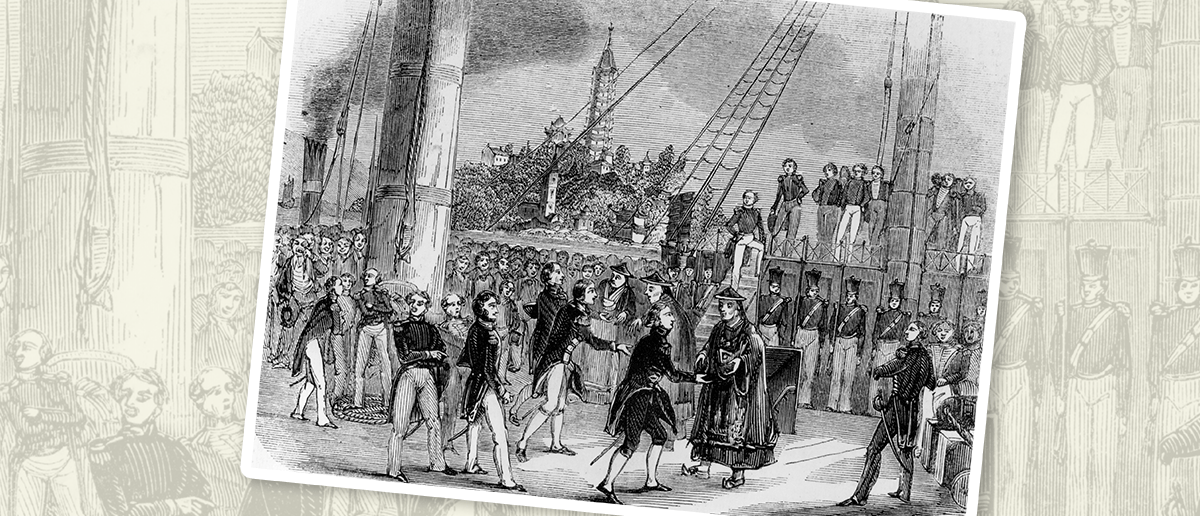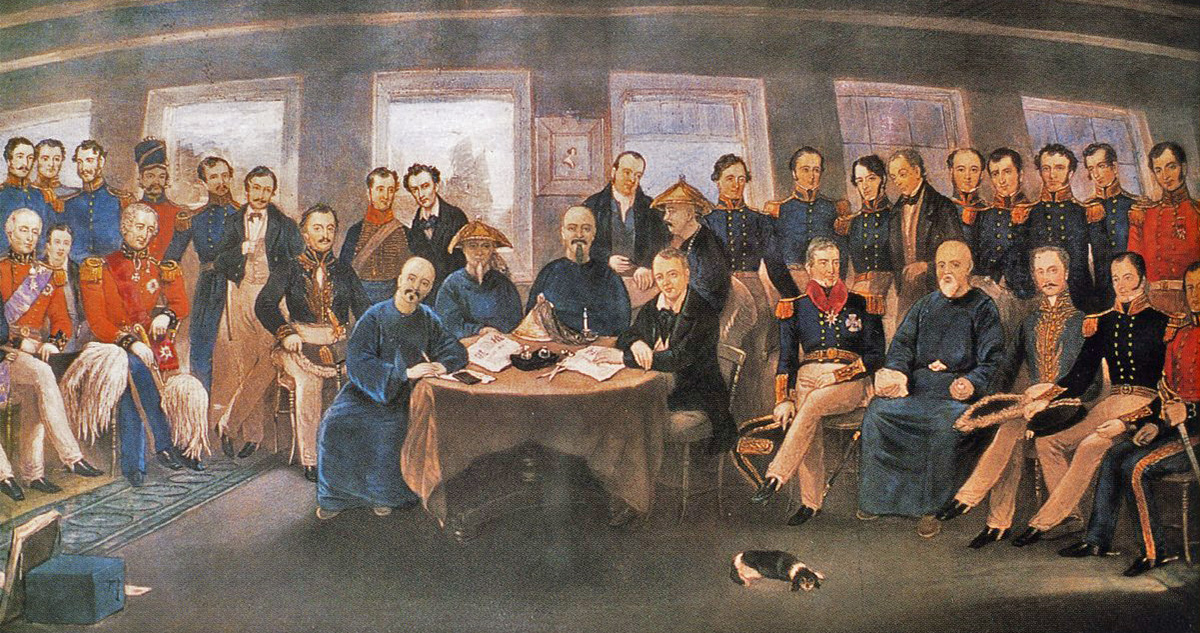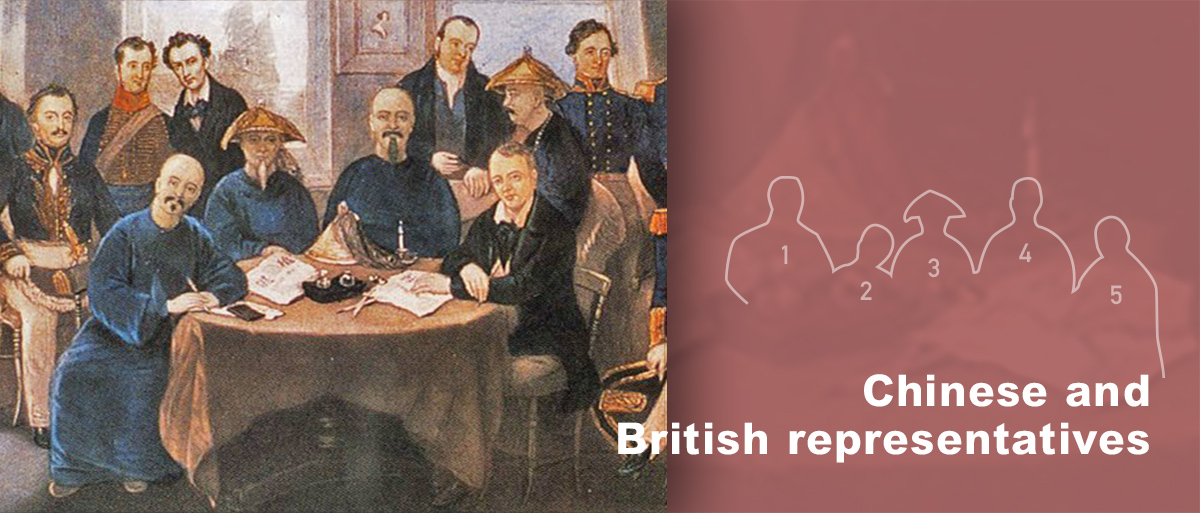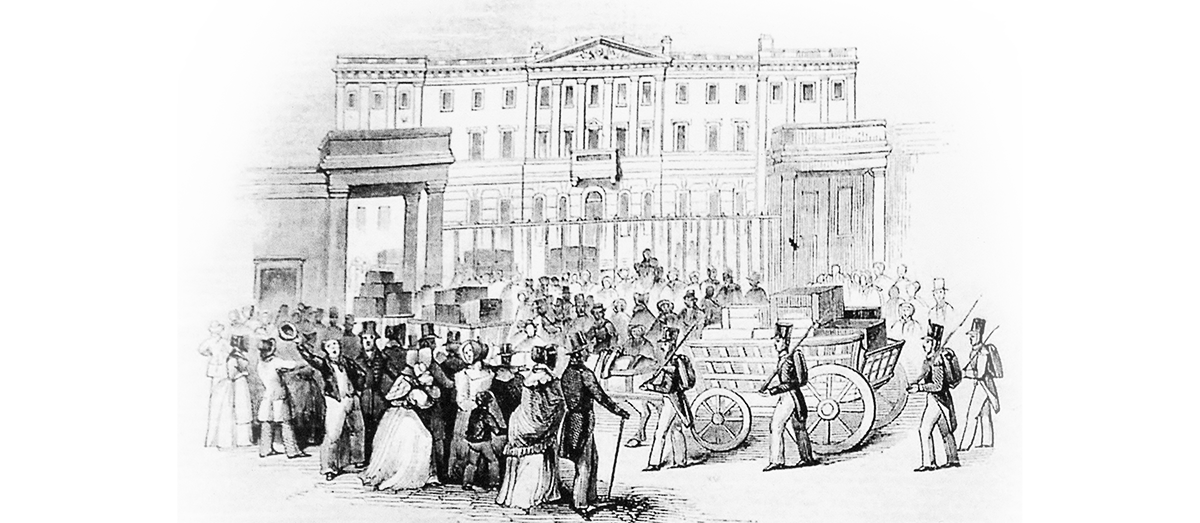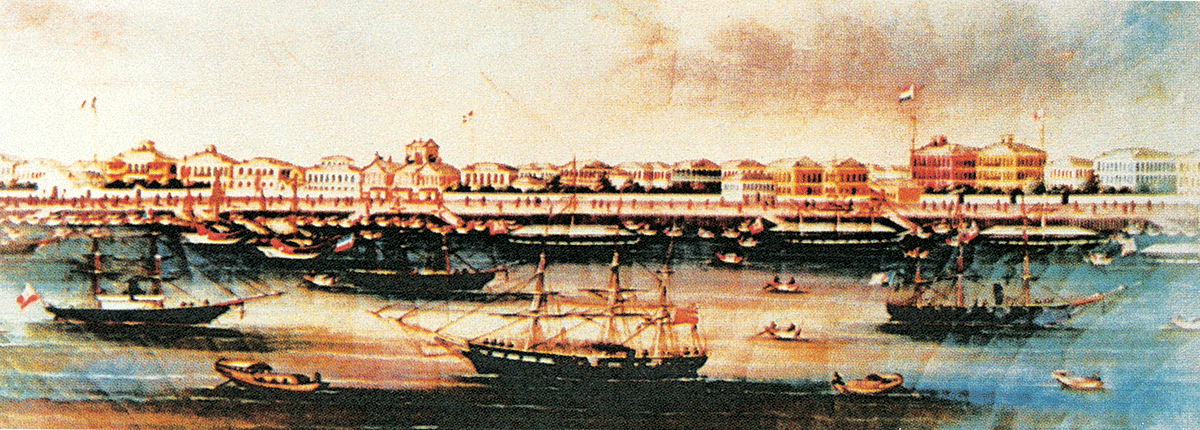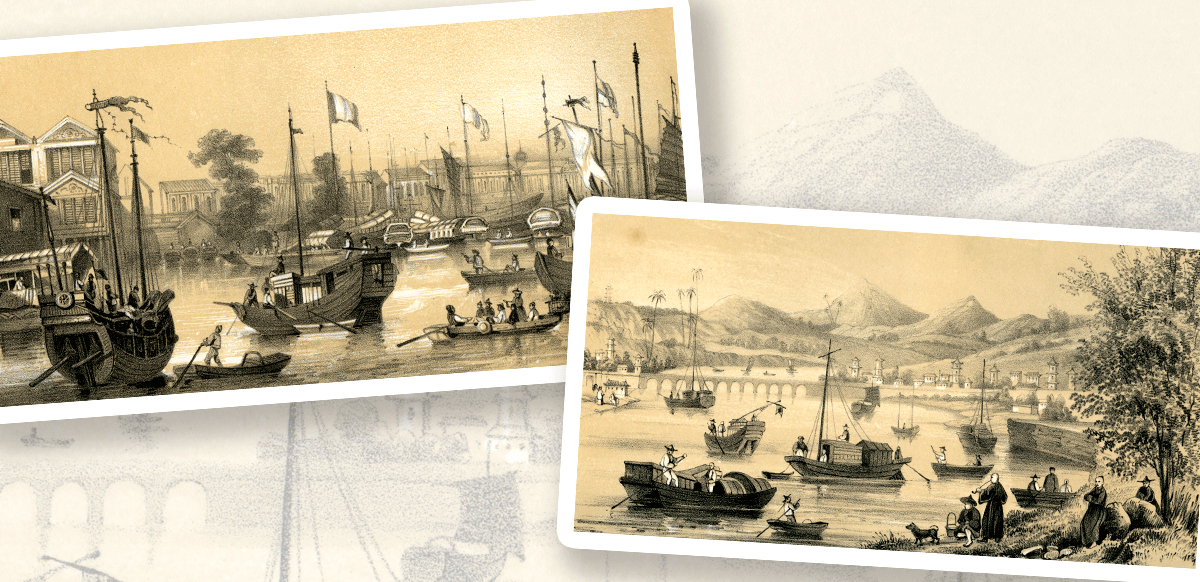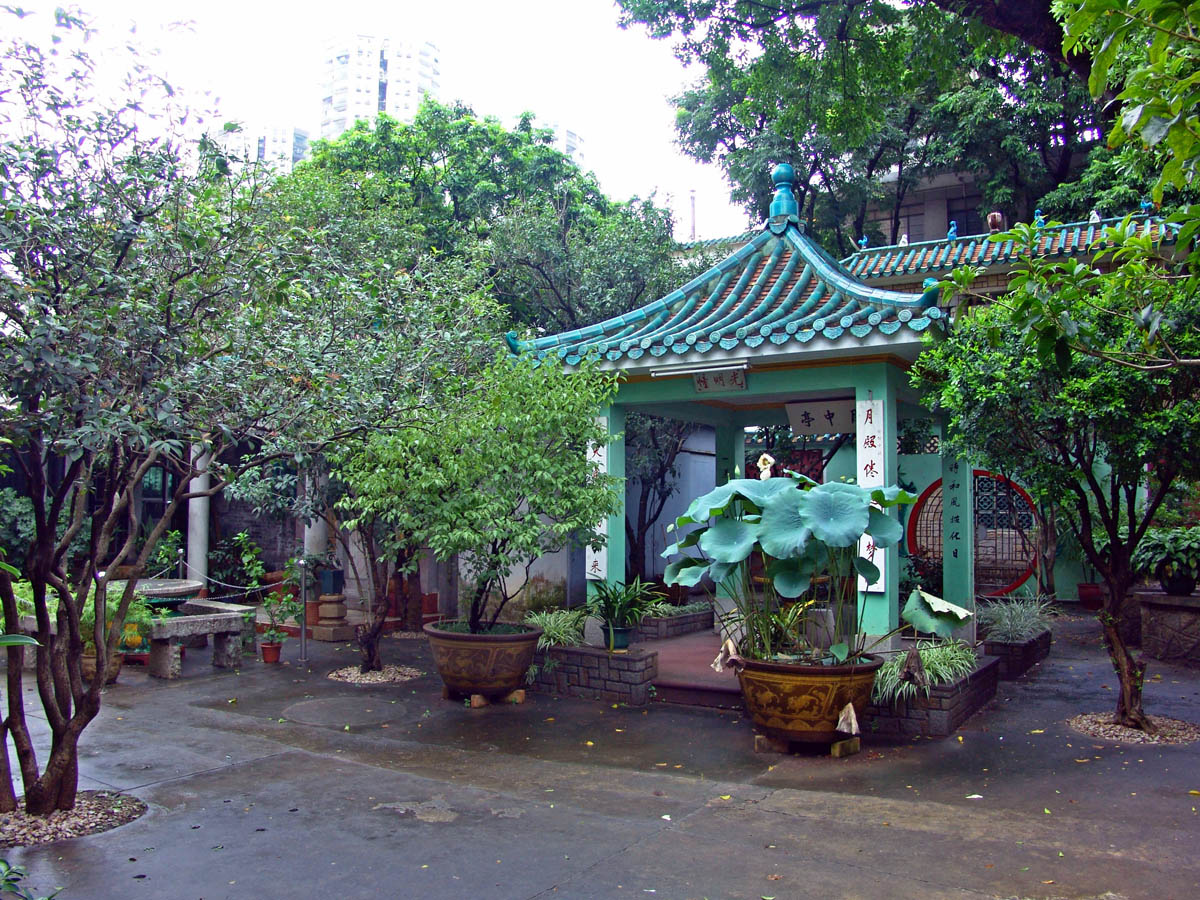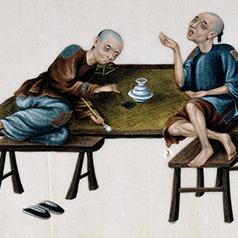On August 29, 1842 Qing officials Qiying (耆英) and Yilibu (伊里布) negotiated with Sir Henry Pottinger, and subsequently signed the Treaty of Nanking (Treaty of Nanjing, 南京條約) aboard the British warship HMS Cornwallis anchored on the Yangtze River. The treaty terms included: opening up Guangzhou (廣州), Xiamen (廈門), Fuzhou (福州), Ningbo (寧波) and Shanghai (上海) to foreign trade; ceding of Hong Kong Island to Britain; 21 million silver dollars in compensation (6 million dollars for confiscated opium, 3 million dollars for unpaid debts, and 12 million dollars for the cost of the war); tariffs to be negotiated; and diplomatic exchange through official correspondence. As a result, China was forced to begin a journey towards “modernization”. In October 1843, supplementary treaties, namely the Five-Port Trade Agreement and Annex, were signed in Humen (虎門) to set up a protocol for foreign trade in the five designated ports and to allow international settlements (commonly known as Concessions) in China. These settlements were governed under the laws of the nation running them. China’s national sovereignty was therefore gravely undermined. Following the example of Britain, the United States and France forced China to sign the Treaty of Wanghia (望廈條約) and the Treaty of Whampoa (黃埔條約) in July and October 1844 respectively securing the same terms.
|
|
Why is the Treaty of Nanking considered the first unequal treaty in modern China? |
|
|
See answer below. |
Soundly defeated both on land and at sea, the Qing court was forced to accept terms for surrender. The picture shows a representative of the Qing court boarding the British warship HMS Cornwallis to sign the peace treaty.
Chinese officials Qiying and Yilibu and British Plenipotentiary Sir Henry Pottinger signed the Treaty of Nanking on August 29, 1842. The treaty is considered the first of the unequal treaties in early modern Chinese history.
Chinese and British representatives:
1 Sir Henry Pottinger, British Plenipotentiary (later Hong Kong’s first governor)
2 Huang Entong (黃恩彤), Surveillance Commissioner (按察使) of Jiangsu
3 Yilibu, Imperial Commissioner
4 Qiying, Imperial Commissioner and principal representative of the Qing
5 Robert N. Thom, interpreter
“His Majesty the Emperor of China cedes to Her Majesty the Queen of Great Britain, etc., the Island of Hongkong, to be possessed in perpetuity by Her Britannic Majesty, Her Heirs and Successors, and to be governed by such Laws and Regulations as Her Majesty the Queen of Great Britain, etc., shall see fit to direct.” – The Treaty of Nanking on ceding Hong Kong Island to Britain, a treaty that has long-lasting consequences.
Depiction of the delivery of China’s war indemnities to the Royal Mint in Britain. The Treaty of Nanking required China to pay huge war indemnities as well as ceding its territory.
Shanghai in its early days as a treaty port. The Treaty of Nanking opened up China for trade. In accordance with the treaty, five Chinese cities including Shanghai were opened to free trade. Shanghai gradually overtook Guangzhou as the major port for foreign trade.
Xiamen (left) and Ningbo (right) in 1847, two of the free trade ports opened in accordance with the Treaty of Nanking.
Guangzhou (left) and Fuzhou (right) in the 1847. These were two of the free trade ports opened in accordance with the Treaty of Nanking.
After the Opium War, China was forced by other Western powers to make similar concessions through unequal treaties. In July 1844, China signed the Treaty of Wanghia (Wangxia or Mong-Ha) with the United States. Modern-day photo of the Kun-lam Temple's back garden in Mong-ha Village (Guanyin Temple of Wangxia Village) where the Treaty of Wanghia was signed.
A series of foreign invasions and unequal treaties came on the heels of the Opium War and the Treaty of Nanking: The Qing court was forced by France to sign another unequal treaty, on the same terms given to Britain and the United States. The picture shows 19th century Huangpu (Whampao) located in south Guangzhou, where the Treaty of Whampao was signed between China and France in October 1844.
|
|
Why is the Treaty of Nanking considered the first unequal treaty in modern China? |
|
|
Before 1840, China had signed a number of treaties with foreign countries, such as the Sino-Russian Treaty of Nerchinsk under Emperor Kangxi, but these treaties were signed on equal terms. The 1842 Treaty of Nanking and its unequel clauses forced China, as the defeated nation, to make reparations, cede land, open ports for foreign trade, allow concessions for international settlements, give up tariff rights and grant unilateral most-favored nation status to foreign countries and extraterritoriality privileges to their citizens. It marked the beginning of China’s loss of its sovereignty and the gradual migration to semi-colonialization. |
Source of most photos used in this feature piece: Visual China Group (pictures 1, 5-10), misc. photo sources.





